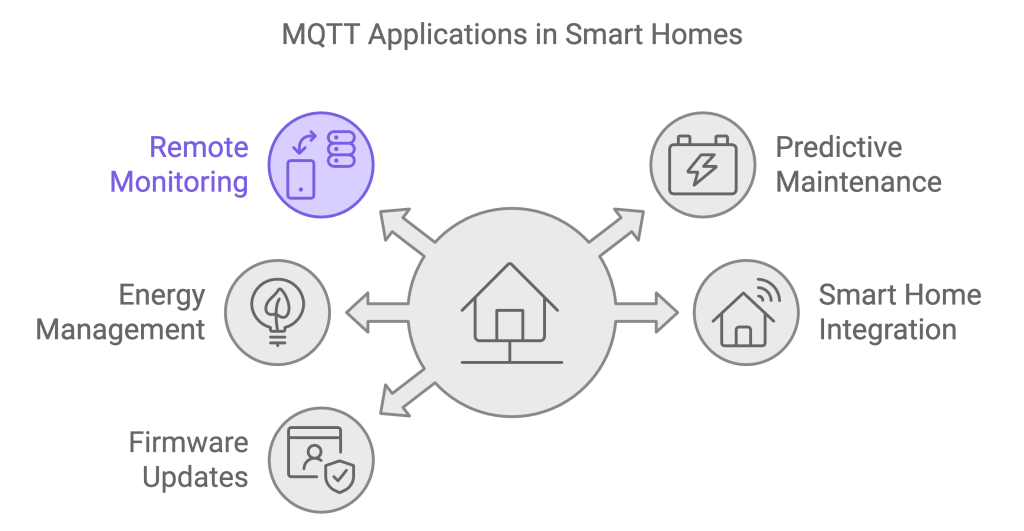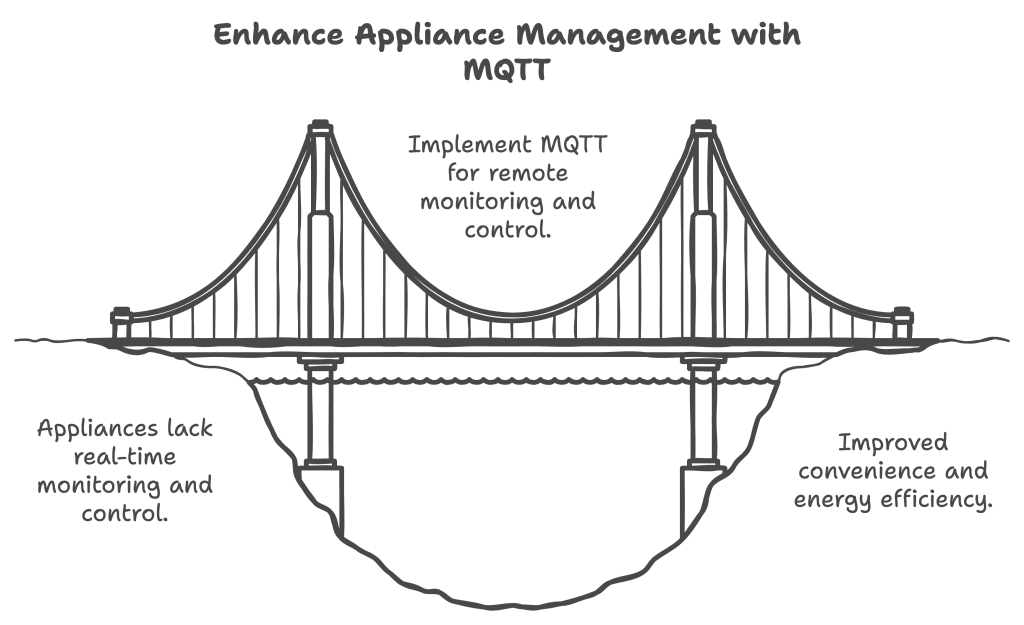MQTT Use Case in the White Goods Sector
In the rapidly evolving landscape of smart home technology, the Internet of Things (IoT) has become a pivotal force in enhancing consumer experiences and operational efficiencies. This document explores the application of the Message Queuing Telemetry Transport (MQTT) protocol in the white goods sector, focusing on how it facilitates communication between appliances and cloud services, enabling smarter, more connected homes.

Introduction to MQTT
MQTT is a lightweight messaging protocol designed for low-bandwidth, high-latency networks, making it ideal for IoT applications. Its publish/subscribe model allows devices to communicate efficiently, ensuring that messages are delivered only to those devices that need them. This is particularly beneficial in the white goods sector, where appliances such as refrigerators, washing machines, and ovens can be interconnected to provide enhanced functionality and user experience.
Use Cases in the White Goods Sector
1. Remote Monitoring and Control
One of the primary use cases of MQTT in the white goods sector is remote monitoring and control of appliances. Consumers can use mobile applications to monitor the status of their appliances in real-time. For example, a washing machine can send notifications when a cycle is complete, or a refrigerator can alert users when the door is left open. This capability not only enhances user convenience but also promotes energy efficiency by allowing users to manage their appliances more effectively.
2. Predictive Maintenance
MQTT can facilitate predictive maintenance in white goods by enabling appliances to communicate their operational status and performance metrics to manufacturers or service providers. For instance, a dishwasher can send data regarding its water usage and cycle times, allowing manufacturers to analyze this information and predict potential failures before they occur. This proactive approach can reduce downtime and repair costs, ultimately leading to improved customer satisfaction.
3. Energy Management
With the increasing focus on energy efficiency, MQTT can play a crucial role in managing energy consumption in smart homes. Appliances can communicate their energy usage patterns to a central system, which can then optimize their operation based on real-time energy prices or grid demand. For example, a smart thermostat can adjust the operation of connected appliances, such as a dryer or dishwasher, to run during off-peak hours, reducing energy costs for consumers.
4. Integration with Smart Home Ecosystems
MQTT enables seamless integration of white goods with broader smart home ecosystems. Appliances can interact with other smart devices, such as lighting systems or security cameras, to create a cohesive user experience. For instance, a smart oven can be programmed to preheat when a user arrives home, based on data from a smart doorbell or geolocation services. This level of integration enhances the overall convenience and functionality of smart homes.
5. Firmware Updates and Security
MQTT also supports the secure delivery of firmware updates to white goods, ensuring that appliances remain up-to-date with the latest features and security patches. Manufacturers can push updates directly to appliances, reducing the need for manual intervention by users. This capability is essential for maintaining the security and performance of connected devices in an increasingly interconnected world.
Conclusion
The application of MQTT in the white goods sector presents numerous opportunities for enhancing consumer experiences, improving operational efficiencies, and promoting energy management. As the demand for smart home technologies continues to grow, the integration of MQTT into white goods will play a significant role in shaping the future of connected living. By leveraging the capabilities of MQTT, manufacturers can create smarter, more responsive appliances that meet the evolving needs of consumers

